|
(click here to view the original post on Facebook)
On this week's Peace of History: In recognition of this spooky holiday, let us consider some truly scary questions -- what should you do if an apocalyptic weapons system was being constructed just several miles away from where you live? And what happens when our enemies follow our lead and make their own? These were some of the central questions that the protestors from the Committee for Non-Violent Action (CNVA) posed to the people of New London County, Connecticut in the summer of 1960. Conceived primarily by Bradford Lyttle and sponsored by the CNVA, the Polaris Action was a summer-long campaign to “educate Americans to the realities and dangers of the nuclear deterrent policy typified by the Polaris submarines and their deadly cargoes of nuclear missiles” that were being built at General Dynamics/Electric Boat in Groton. Hundreds of participants marched, distributed leaflets, conversed with workers, stood in daily vigils, and made lasting connections with both the local communities and with each other. "Polaris Action may be thought of as a giant test tube in which are being tried out a great variety of novel peace education activities." The four goals as articulated in the CNVA bulletin "Polaris Action" were:
It was this great experiment in New London and surrounding areas that attracted hundreds of activists to the summer-long action. When the summer ended, however, upon reflection of previous "summer actions" sponsored by the CNVA, many CNVA members including Marj and Bob Swann decided that the old formula “...where we stirred up the community for the summer and then everyone left -- either going to prison or returning home” was neither practical nor morally responsible. So several CNVA members including the Swanns decided to establish a permanent base in southeastern Connecticut to continue to protest the arms race at the largest submarine manufacturing facility in the country, and to promote economic alternatives. One initially skeptical journalist, Barbara Deming, was a participant of Polaris Action whose involvement proved to be invaluable. When Barbara Deming joined CNVA and became an activist, her involvement also brought in her partner, painter Mary Meigs. The group decided to make a move to a rural area where they could have a larger community and have the space to organize trainings and workshops. Mary Meigs bought the Campbell Farm in Voluntown, Connecticut and gifted it to CNVA to have it be used as the new headquarters of the New England chapter. The property was reestablished as a land trust, and eventually became the Voluntown Peace Trust we know today. Today, the anti-nuclear weapons movement is still active, and as the U.S. recently withdrew from the Intermediate-Range Nuclear Forces Treaty, perhaps it warrants as much support as it did six decades ago. Many of you are aware of the Kings Bay Plowshares, seven of whom were recently sentenced to 25 years in prison for their protest actions on April 4, 2018. On that day, seven Catholic peace activists entered the Naval Submarine Base at Kings Bay, Georgia to peacefully and symbolically disarm those Trident nuclear missiles, and to deface monuments that glorify those missiles. One could draw a line from those audacious CNVA activists who attempted to board Polaris submarines in the New London area 59 years ago to the brave actions of our allies in Georgia today. Since the Polaris Action in 1960, Polaris subs were replaced by Trident-armed Ohio-class submarines -- and now the Ohio-class is being replaced by the new Trident-armed Columbia-class submarines. The following links provide more information on the Kings Bay Plowshares: https://ithacavoice.com/category/story-database/kings-bay-plowshares-7-story-database/ https://consortiumnews.com/2019/10/30/convicted-antinuclear-activists-speak-out-pentagon-has-brainwashed-people/ https://kingsbayplowshares7.org/ Next week: We will zoom in on journalist-feminist-author Barbara Deming -- what turned her from her cynical skepticism, why she joined CNVA, and how she helped the movement grow in its understanding of nonviolence. (click here to view the original post on Facebook)
On this week's Peace of History: We take a look at the Swann House, named for Bob Swann who designed and built the building. As a builder for Frank Lloyd Wright, Bob worked on Wright’s “Usonian” affordable homes around Kalamazoo, Michigan. “Usonia” was Wright’s word for his particular utopian vision for a new beautiful, ethical, middle-class lifestyle in the United States -- shaped in large part by his simple but bespoke homes. Inspired by the renowned architect, Bob tried his own experiments in making beautiful, affordable housing. The Swann House, built with volunteer labor and materials totaling just $3000, is one such example. Fans of Frank Lloyd Wright’s “Usonian” affordable homes might recognize familiar features in the the Swann House. Nestled into a small slope and facing the dense woods just a few yards away, the Swann House sits back beyond the VPT Farmhouse and a little west of the A.J. Muste Conference Center. Vertical panel windows run across the front of the Swann House, as do some trapezoidal windows at the peaks of the asymmetrical cathedral ceilings. From the surprisingly spacious and simply decorated interior of the house, one experiences a strong sense of nature’s fecundity surrounding and enveloping the home as vibrant woodland colors spill through the dark framed windows. Especially during autumn in New England, arbors both young and ancient fill the view from the front windows, and the tops of the tallest surrounding trees peak through the upper windows. Wright fans may also notice, however, where Bob diverged from strictly Wrightian principles. For example, while one of Wright’s principles for designing Usonian homes was to unify the inside and outside spaces in a single, continuous aesthetic, the Swann House makes greater use of contrast, inviting in the naturalistic qualities from the outside to stand in majestic variance to the vast interior white wash walls and stained wood paneling. However, the most obvious stylistic divergence may be that the Swann House lacks the radical horizontalism of Wright’s homes, instead using both horizontally and vertically oriented wooden boards as well as a more classically steep-pitched roof. The steeper pitch of the roof allowed for another feature rarely seen in Wright’s single-story Usonian homes: a loft. Despite the vertical positioning of this room, the Swann House (like Wright’s Usonian homes) has a largely open and spacious plan, and the inclusion of the loft proved to be a clever use of space for two bedrooms without taking away from the minimalist grandeur of the main room. Recently, we here at VPT have been renovating this upper loft area in order to better comply with fire codes, to respond to changes in how we use the space, and to have the house better fit with the land. The loft will now be divided into two rooms, both with access to a new back deck. As the back of the house is partially set into a slope, the deck and accompanying ramp will bridge the small gap between the top of the slope and the house itself, giving the two loft rooms a safer "ground floor" point of egress, and generally providing greater accessibility. These changes are being added in such a way as to improve the house's aesthetic cohesion with the shape of the land while still maintaining the original spirit of the structure. These recent renovations have not been cheap, and we are currently raising money to pay for this project. If you can give a donation, you may do so at the following link: https://www.givelify.com/givenow/1.0/MjE5OTY=/selection. Also, if you are a Charter Oak Credit Union member, Charter Oak will match every $25 you donate to us -- all you have to do is fill out the following form and send it to us: https://charteroak.org/content/matching-gifts/ Next week, we will return to the very beginnings of the Voluntown Peace Trust, starting with the Committee for Non Violent Action (CNVA) and some of the diverse founding members that Bob and Marj Swann helped onboard. Sources: https://centerforneweconomics.org/…/bob-swanns-positively-…/ https://centerforneweconomics.org/…/lifestyle-interviews-b…/ https://www.thoughtco.com/usonian-style-home-frank-lloyd-wr… https://franklloydwright.org/frank-lloyd-wrights-top-inter…/ (click here to view the original post on Facebook)
On this week's Peace of History: We continue with Marjorie Swann’s story, highlighting a few of the many critically important, and somewhat surprising, relationships that she made along the way. As mentioned last week, Marj Swann was a charter member of the Congress of Racial Equality (CORE), and it was perhaps through that organization that she met the anti-war and civil rights organizers Juanita and Wally Nelson. Juanita and Wally helped form the pacifist activist group Peacemakers in 1948, along with Ernest and Marion Bromley. Marj became a committed and passionate member. She remained lifelong friends with the Nelsons and Bromleys, all of whom were war tax resisters. While Marj and Bob lived in Yellow Springs, Ohio in the 1940s-1950s, Marj met young Antioch student Coretta Scott through their respective activities in the local NAACP chapter. It would be a few years before Coretta would meet Martin and append “King” to her name. These two pacifist women continued their friendship throughout the tumultuous years after. Marj worked closely with many activists who have become known to various constituencies, including: Anne Braden, renowned white woman who committed herself to fighting racism in the South, with whom Marj worked as another white woman ally of anti-racism and disarmament; and Barbara Deming, notable gay feminist activist-author, who joined the CNVA soon after meeting Marj. As a nonviolence trainer, Marj co-trained with many other activists including Bernard Lafayette, who was one of the student organizers of the Nashville Sit-Ins and who was working with the Southern Christian Leadership Conference. Many from SCLC, including Bayard Rustin and Rev. Fred Shuttlesworth, did workshops with Marj. Together Marj Swann and Barnard Lafayette facilitated a training in Boston attended by Sukie Rice, who was instrumental in creating the nonviolent training and organizing structure for the Clamshell Alliances; and Dick Gregory, comedian-activist with whom Marj fasted for 22 months to protest the continual U.S. involvement in the Vietnam War. Though she built lifelong relationships with so many illustrious individuals in the greater peace and justice movement, Marjorie Swann did not forget about her less-famous neighbors in Voluntown and the surrounding area. To Marj, the struggles for disarmament, anti-racism, poverty relief, land reform, and many other issues were all connected to each other in a continuity of working for peace and justice. Though the Swanns moved from Voluntown in 1971, Marj returned in the 1980s and continued her service work at a local women’s center. Additionally, she offered the Swann House on the VPT property as a safe home for families who had suffered domestic abuse. In 2010, at the age of 90, Marj led the organizing for the 50th anniversary of CNVA, bringing together folks who had been active with CNVA in the early days, including Gene Sharp, known for his research and writings on nonviolent struggles throughout the world, who had distanced himself from the peace movement. That was to be her last visit to Voluntown before she died at the age of 93. For a brief reflection on Marj Swann's legacy here in southeastern Connecticut, and a glimpse at the 50th CNVA anniversary protest in 2010, check out The New London Day's article (https://www.theday.com/article/20100613/NWS08/306139849) Next week: We will focus on the “Swann House” on the VPT property. Inspired by the affordable housing building work that Bob had previously done for renowned architect Frank Lloyd Wright, Bob designed and built the house for VPT. (click here to view the original post on Facebook)
On this week's Peace of History: We shine our spotlight on the early political activities of Marjorie Swann, another founding member of the Voluntown Peace Trust and a decades-long luminary of peace and justice activism. Through over a half-century of involvement in civil rights, community relations, and international peace activities, Marj Swann grew and spread the active nonviolence movement in the United States, forging important connections with a wide diversity of people along the way. In 1942, at the age of 21, Marj became a charter member of CORE (Congress of Racial Equality), where she first experienced nonviolence training. So influenced was she by the training she received through CORE that she came to organize and facilitate countless more nonviolence trainings over the years, working alongside other famous activists of the civil rights and anti-war era. With her husband, Bob Swann, Marj helped found the Committee for Nonviolent Action in 1957, focusing on ending the arms race. The next year, Marj was arrested during a civil disobedience action for walking through the gates of a new nuclear missile base in Omaha, Nebraska. Redbook Magazine wrote an article about her entitled “You are a Bad Mother” -- words spoken by the judge to Swann as he sentenced her to prison for six months. Neither the judge’s criticism nor the prison sentence deterred Marj from her activism for very long, and in 1960, Marj and Bob came to New London, Connecticut to organize opposition to the nuclear weapons-carrying submarine Polaris. The couple moved their family of four children to the farm that became the Community for Nonviolent Action (on the Voluntown Peace Trust). Even as she worked on such globally-affecting issues as nuclear disarmament, Marj always cultivated relationships closer to home, as well. Marj was known for asking local mothers how their enlisted sons were doing in Vietnam. After the Minuteman attack on the Voluntown farm in 1968, Marj even brought food to the families of the imprisoned Minutemen. And the breadth of her resistance activities continued to expand and deepen across the span of her life. Next week: We will examine how Marj Swann’s diverse network of activists and organizers developed over the decades, and how that network affected her political activism later in life. We will see what sort of fruit may grow from such purposeful cultural cross-pollination -- perhaps to learn some lessons from this extraordinary woman. (click here to view the original post on Facebook)
On this week's Peace of History: Bob Swann became acquainted with the Albany Movement when the Committee for Non-Violent Action organized the Quebec to Guantanamo Walk in 1963. The participants were arrested for attempting to have an integrated march through Albany, Georgia and spent over a month in jail. Through this experience, Bob met activists Slater King, C.B. King, and Charles Sherrod, and together they began discussions about breaking the pattern of white land-holding in the South. People from a number of organizations came together to help create New Communities, Inc., a 5000 acre tract of land with plans for farming and affordable housing. The film Arc of Justice: The Rise, Fall and Rebirth of a Beloved Community tells the story of this first community land trust in the United States (https://www.arcofjusticefilm.com). This week, people from around the country will gather in Albany, Georgia to celebrate the 50th Anniversary of New Communities, Inc. (https://www.nci50thanniversary.com) Joanne Sheehan, who is VPT’s board chair and the President of the Board of the Southeastern Connecticut Community Land Trust, and Sharmaine Gregor, their Vice President, will write us from the celebration on Friday. Next week: We'll tell you about Marj Swann -- a charter member of Congress of Racial Equality in 1942, a well-respected nonviolence trainer, and a partner of Bob Swann -- whose characterization as a "Bad Mother" for going to jail in her attempts to stop the proliferation of nuclear weapons was documented in Redbook Magazine. |
AuthorWrite something about yourself. No need to be fancy, just an overview. Archives
March 2023
Categories |
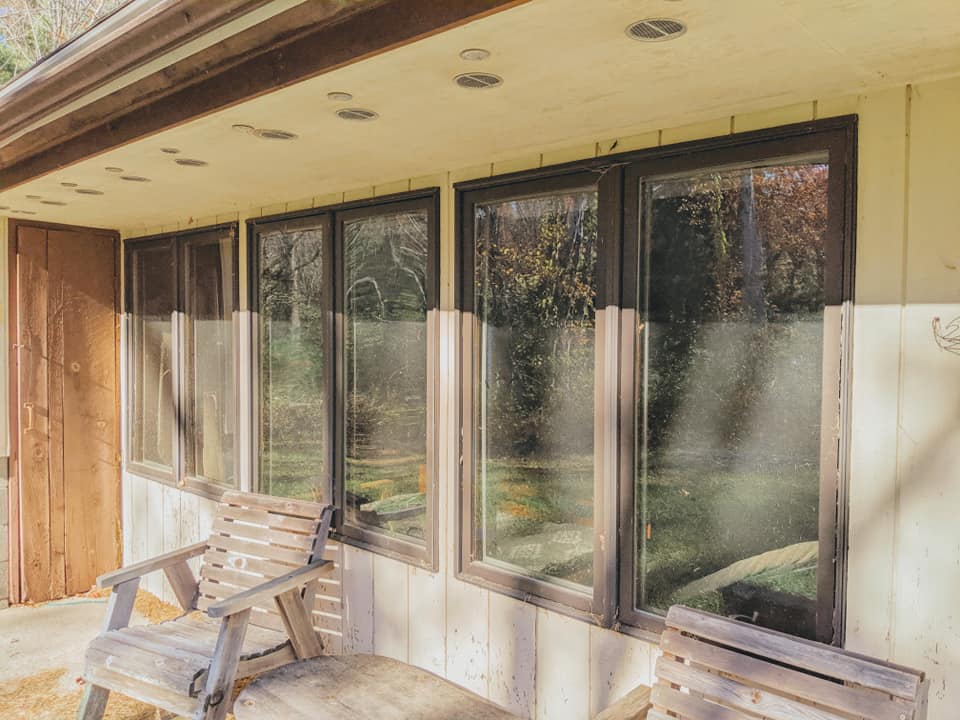


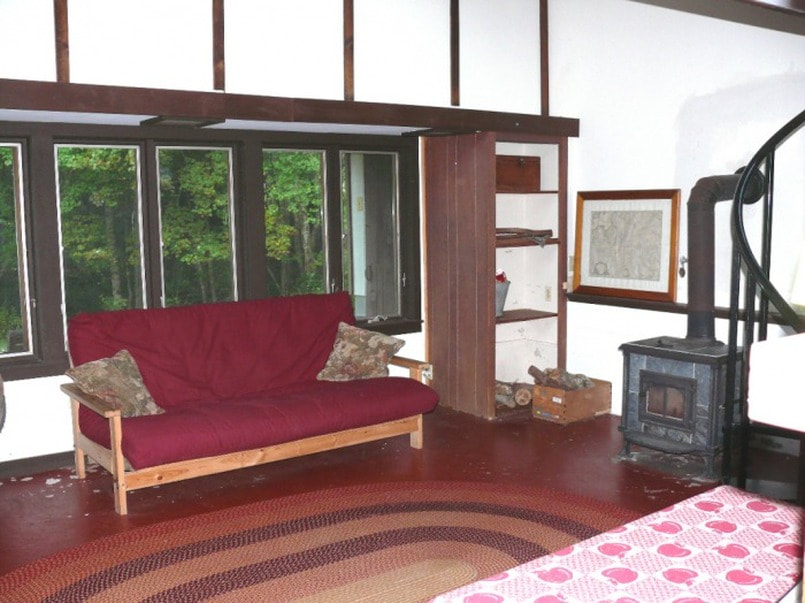



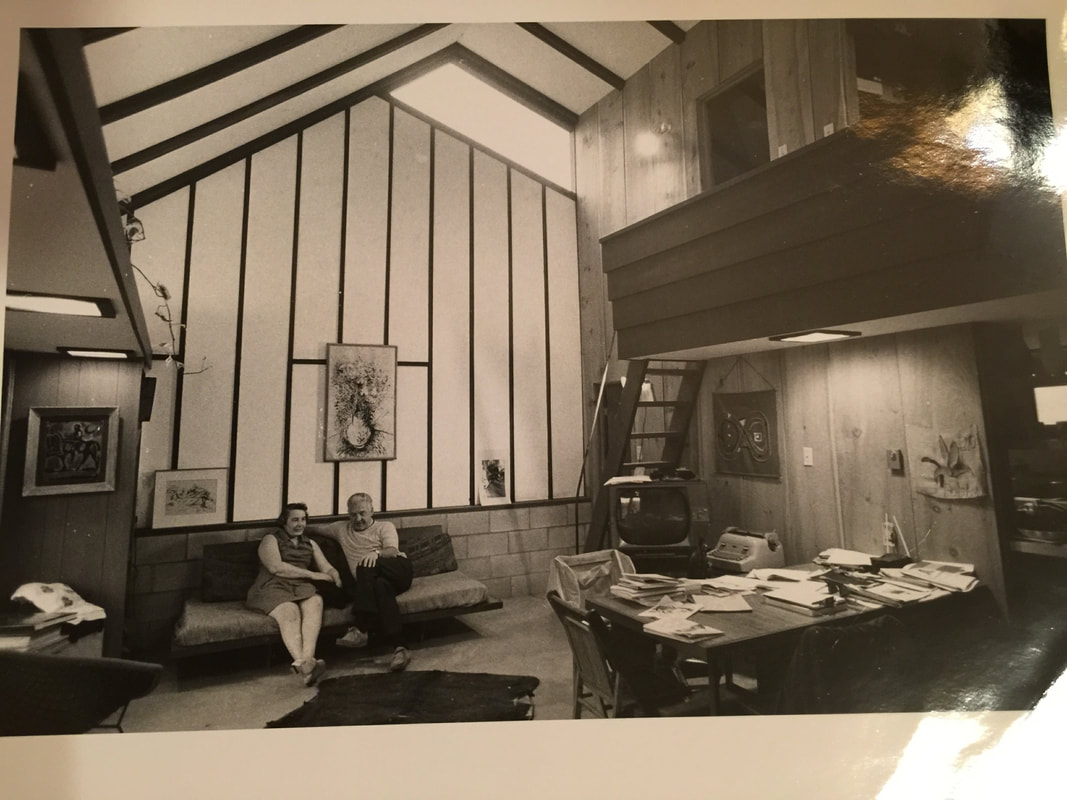
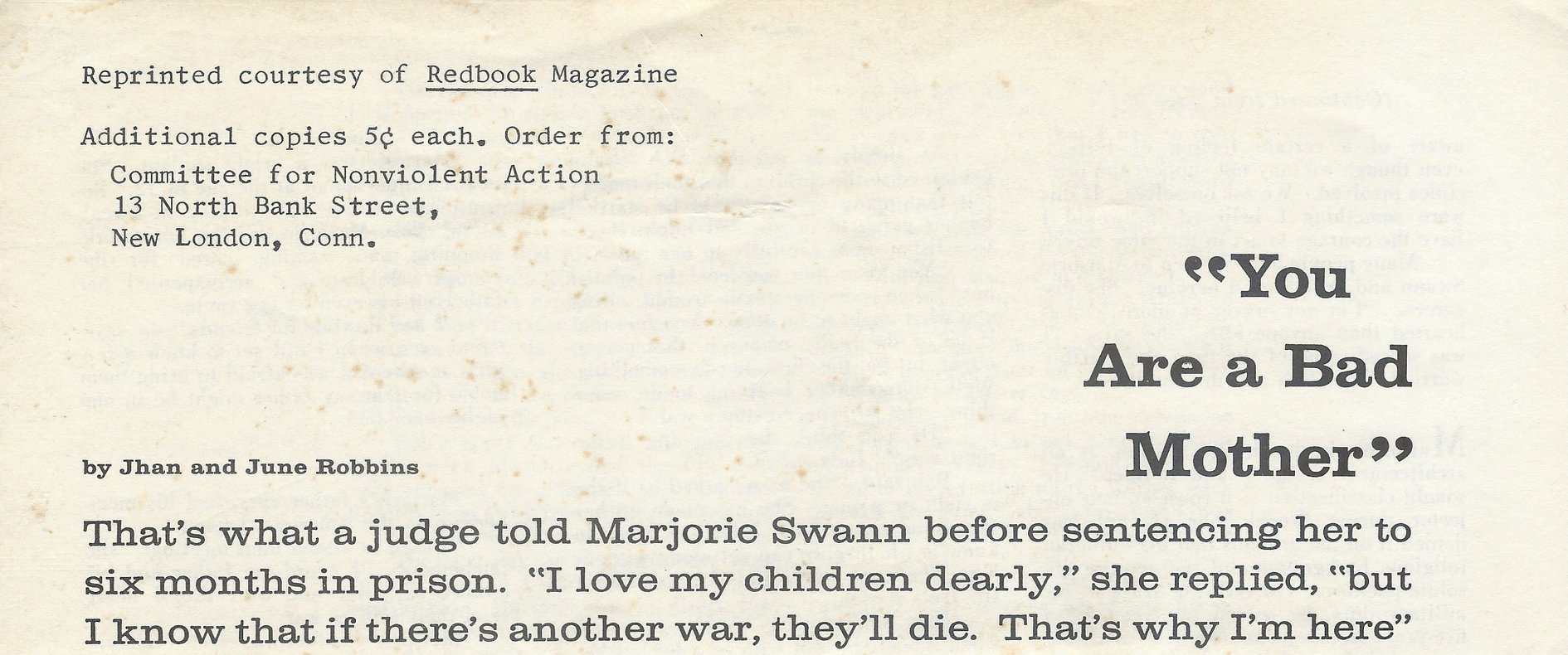
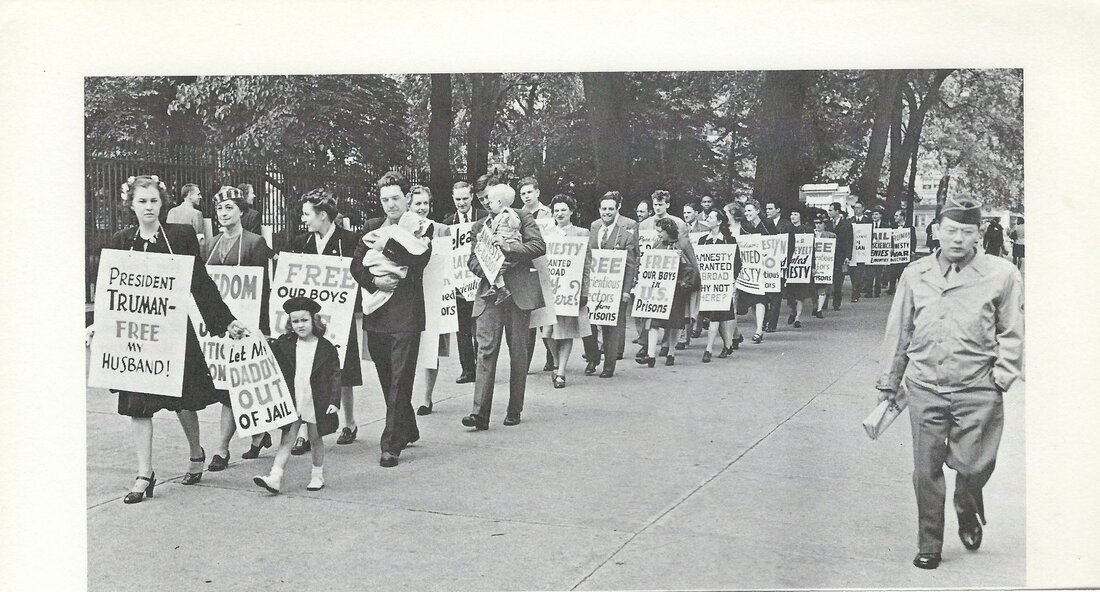
 RSS Feed
RSS Feed